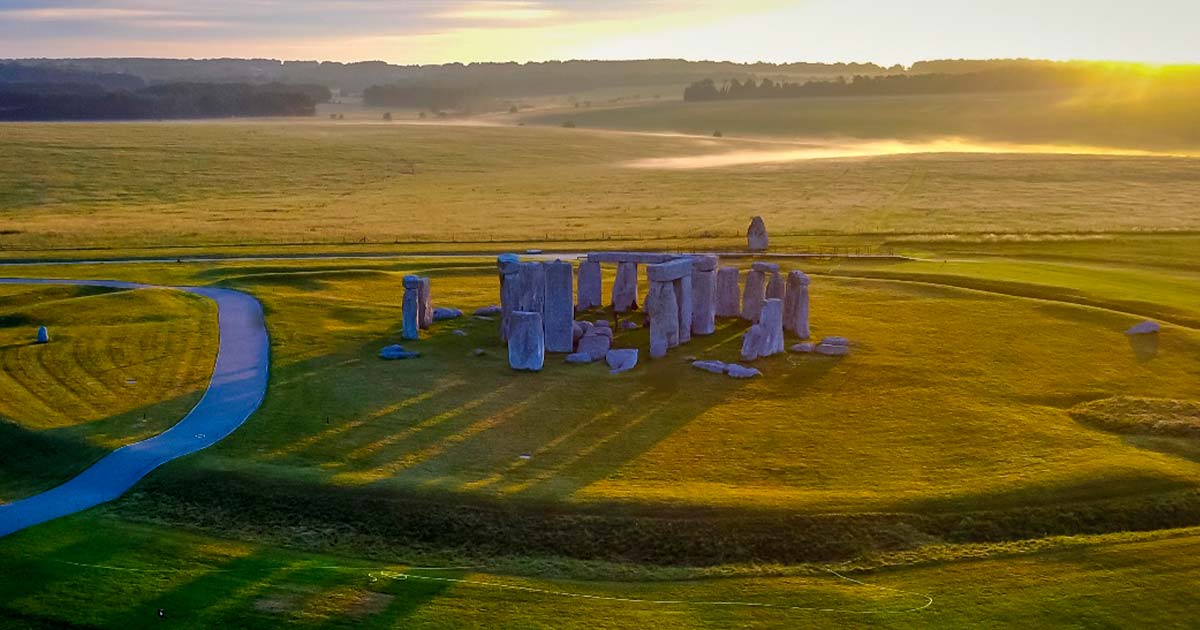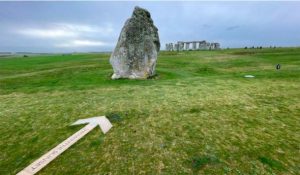Stonehenge Turns On at Dusk Instead of Dawn on the Winter Solstice

Today, as the northern hemisphere experiences the Winter Solstice, English archaeoastronomers remind us that Stonehenge was built to honor the sunset on this crucial date, and not just the Summer Solstice sunrise, that modern pilgrims flock to every June. So those early risers who have gone there today to see the sunrise are actually visiting at the wrong time, and also looking in the wrong direction!
Mistaken Stories of Stonehenge
The original purpose of Stonehenge in Salisbury Plain, Wiltshire, England, has been lost in the fogs of time. However, in 1100 AD, Geoffrey of Monmouth claimed the wizard Merlin built the monument, in 1640 AD, the philosopher John Aubrey associated it with the druids, and In 1655 AD, architect John Webb said Stonehenge was a Roman temple dedicated to the Roman sky god, Caelus. The site has thus enjoyed a long history of speculation regarding its original purpose, with many falsehoods proposed.
Monumental Discovery! More of the Stonehenge Origin Story Comes to Light
Cecil Chubb: The Man Who Bought Stonehenge
Today, archaeologists generally agree that Stonehenge was a Late Neolithic monument, originally built around 3,100 BC, and that it was developed until around 2,500 BC. The site seems to have been abandoned around 1520 BC, and in the 1960s Gerald Stanley Hawkins, a British-born American astronomer and author claimed the stone circle served as a calculator for predicting lunar eclipses, built by farmers migrating from Central Europe.
The Landscape Says ‘No’
All of the above theories have failed academic tests, but the Greater Stonehenge Cursus, known as “The Avenue,” reveals the underlying functional nature of the monument. Measuring around 3 km [1.864 miles] long, and linking Stonehenge to the River Avon almost two miles away, during the Neolithic period large groups of people processed along this ceremonial pathway.
In modern times, thousands of people flock to the site every year on the morning of June 21 to see the Sun rising on the Summer solstice, the longest day of the year. However, archaeologists claim that the site was equally or perhaps even more importantly focused on the Winter Solstice sunset, and that on that afternoon each year, pilgrims watched the Sun setting in the southwest, behind the stones, marking the turn of the year and the return of light, with longer days thereafter.

With the Heel Stone in the foreground, and the Stone Circle on the horizon, the arrow on the ground points in the direction of winter solstice sunset. (Tony Skerl/Adobe Stock)
Turning One’s Back on The Sun
But an axis has two directions, right? And the monument produces great visual effects on both solstices. So why do archaeologists think it was principally aligned to the Winter Solstice sunset over the Summer Solstice sunrise? In an article in The Telegraph, Prof Clive Ruggles, a leading English archaeoastronomer and authority on Stonehenge, points out that the orientation of the ceremonial walkway, The Avenue, is an indication of this.

Prof Clive Ruggles says:
“The main reason for believing that the Winter Solstice sunset, rather than the Summer Solstice sunrise, was the more important event at Stonehenge is that the formal, ceremonial approach to the monument, along the straight section of The Avenue from the northeast, is towards that direction.
Someone progressing slowly up The Avenue prior to sunset around the time of Winter Solstice would have seen the Sun gradually descending towards the Stones ahead of them, whereas someone approaching before dawn on the Summer Solstice would have had to reach the monument and then turn round in order to see the sunrise.”
Furthermore, the stones were dressed to suit people approaching from the northeast, and their backs were left unhewn, suggesting no architectural consideration of the Summer Solstice sunrise.
When functional, the site attracted thousands of pilgrims who moved towards to the vast outdoor theatre where they witnessed the final rays of setting Sun spilling through the vertical trilithons, illuminating the 36 ton “Heel Stone”.
An Orientation Supported By Feasting
The people who built Stonehenge were farmers, herders, and pastoralists, therefore, seasonal change dictated what they could grow, and when. However, farmers needed no such stone monument to identify the time of the year, so Stonehenge was most probably a monomialization of the midwinter sunset, when people might have commemorated the dead, or paid homage to a solar deity associated with agricultural success, and failure.
It is known that great numbers of people gathered at Durrington Walls, to the northwest of Stonehenge, where its builders, operators, and attendants feasted at midwinter. Cattle and pig bones found at Durrington Walls demonstrate that they had been brought there over long distances, again suggesting a widespread reverence for the midwinter sunset.
For farmers, Winter was a dangerous time. Nights are long and the days cold, the ground was frozen, and after the bountiful harvests of Autumn, stocks of food were seen dwindling. Perhaps the Sun was worshiped as the giver of light and sustainer of life, and when it was seen dying, ceremonies were performed to ensure the return of warmth, growth, and life.